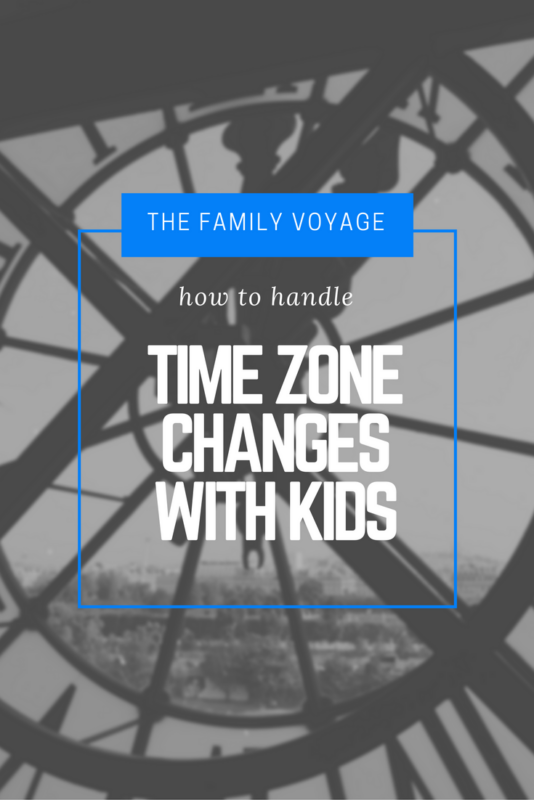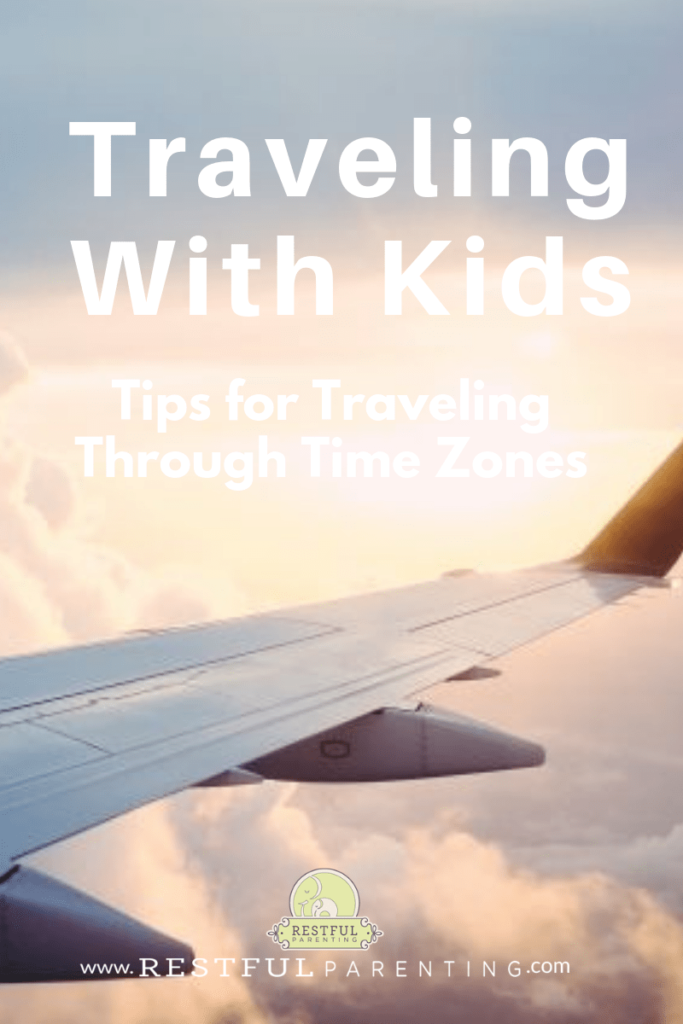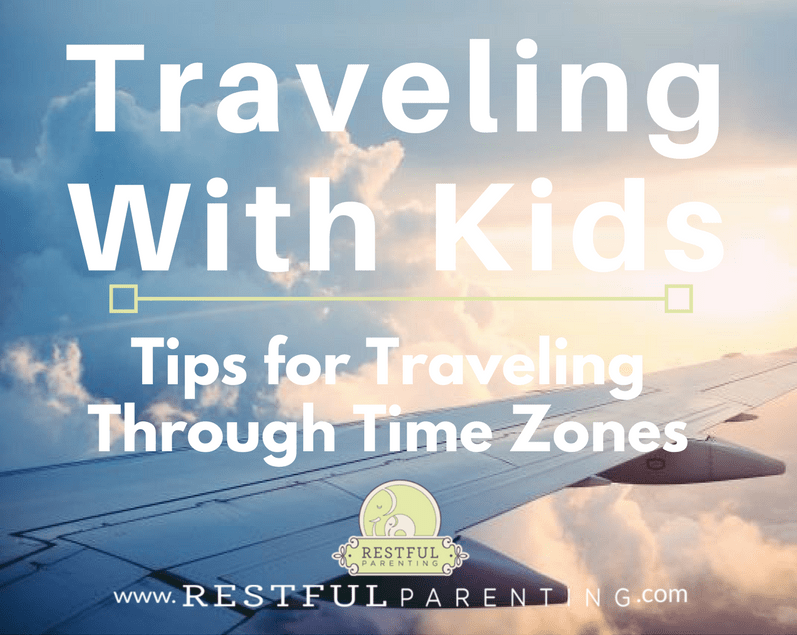Traveling with kids can be a joyous experience, but it can also come with its own set of challenges. One of those challenges is dealing with time zone changes. Whether you’re embarking on a family vacation or visiting relatives in a different country, managing time zone differences can disrupt routines and impact the sleep patterns of both parents and children. In this article, you will find some practical tips and tricks to help you navigate time zone changes with kids, ensuring smooth transitions and allowing everyone to enjoy their trip to the fullest.
Understand the Impact of Time Zone Changes
Traveling to a different time zone can be an exciting adventure, but it can also disrupt your daily routines and sleep patterns. It’s important to understand the impact of time zone changes, especially when you’re traveling with kids. By being aware of the effects of time zone differences and following some simple tips and strategies, you can help your children adjust smoothly and minimize the effects of jet lag.
Awareness of Time Zone Differences
The first step in handling time zone changes is to be aware of the differences between your home time zone and your destination. Knowing the time difference will help you plan and prepare for the adjustment ahead. You can find this information online or by using a world clock app on your phone. It’s also important to consider any daylight saving time changes that may occur during your trip, as this can further impact your schedule.
Effects of Jet Lag on Kids
Jet lag can affect both adults and kids, but children may be more sensitive to the disruption in their sleep and meal routines. Some common symptoms of jet lag include fatigue, difficulty sleeping, irritability, and changes in appetite. These symptoms can make it challenging for kids to adapt to the new time zone and may affect their mood and behavior. Understanding these effects can help you anticipate and address them during your trip.
Preparing Kids for Time Zone Changes
To help your kids adjust to time zone changes, it’s important to prepare them in advance. Talk to them about the upcoming trip and explain that they will be in a different time zone. Discuss the changes in routine that may occur, such as meal and bedtimes, and involve them in the planning process. By including them in the conversation, you can help them feel more involved and prepared for the adjustments ahead.
Planning and Preparation
To ensure a smooth transition to a new time zone, careful planning and preparation are key. By following these tips, you can help minimize the effects of jet lag and make the adjustment easier for your kids.
Check Time Zone Differences in Advance
Before your trip, it’s important to check the time zone differences between your home and destination. This will give you a clear understanding of how many hours you’ll be ahead or behind. Knowing this information in advance will help you plan your travel and adjust your schedules accordingly.
Adjust Sleep and Meal Schedule
In the days leading up to your trip, gradually adjust your child’s sleep and meal schedules closer to the corresponding times in the new time zone. Start shifting their bedtime and wake-up times by 15-30 minutes each day, depending on how many time zones you’ll be crossing. Doing this in small increments will help your child’s body adapt more easily.
Gradual Adjustment of Routine
In addition to adjusting sleep and meal schedules, consider making other gradual changes to your child’s routine. If they have specific activities or rituals that are part of their daily routine, try incorporating them at the corresponding times in the new time zone. This will help create a sense of familiarity and make the transition smoother for your child.

Traveling Eastward
When traveling eastward to a time zone ahead of your home, there are several strategies you can use to minimize jet lag and help your kids adjust more quickly.
Tips for Minimizing Jet Lag
To minimize jet lag when traveling eastward, encourage your kids to stay awake during the flight, particularly if it aligns with their normal waking hours in the new time zone. Engage them in activities and keep them entertained to help them stay alert. This will help their internal clock adjust to the new time zone faster.
Provide Comfort during the Journey
Make the journey as comfortable as possible for your kids by packing their favorite blankets, pillows, and stuffed animals. Having familiar objects will provide a sense of security and comfort during the flight. Additionally, make sure they have access to snacks and beverages to stay hydrated and energized.
Synchronize with Local Time as Soon as Possible
Once you arrive at your destination, it’s important to synchronize your child’s schedule with the local time as soon as possible. Avoid letting them take long naps or sleep at irregular hours, as this can disrupt their adjustment to the new time zone. Instead, engage them in activities that align with the local time, such as exploring the surroundings or participating in local events.
Traveling Westward
When traveling westward to a time zone behind your home, there are specific strategies you can employ to help your kids adjust smoothly to the new time zone.
Tips for Adjusting to the New Time Zone
To help your kids adjust to the new time zone when traveling westward, encourage them to sleep on the flight if it aligns with their normal sleeping hours in the new time zone. Providing them with comfortable sleeping arrangements, such as a travel pillow and blanket, can help create a conducive environment for sleep.
Encourage Natural Light Exposure
Upon arrival at your destination, expose your child to natural light as soon as possible. Natural light helps regulate the body’s internal clock and can aid in adjusting to the new time zone. Spend time outdoors during daylight hours and encourage outdoor activities to help your child adapt to the local daylight patterns.
Establish a Bedtime Routine
Establishing a consistent bedtime routine in the new time zone can help signal to your child’s body that it’s time to sleep. Incorporate familiar bedtime activities such as reading a book or taking a warm bath. This routine will provide a sense of comfort and familiarity, making it easier for your child to fall asleep at the appropriate time.

During the Trip
While on your trip, there are several things you can do to support your kids’ adjustment to the new time zone and make their travel experience more enjoyable.
Stay Hydrated
During the journey, it’s important to keep your kids hydrated. Dehydration can exacerbate the symptoms of jet lag and make it harder for them to adjust to the new time zone. Encourage them to drink plenty of water and limit their intake of sugary drinks or caffeine.
Keep Kids Engaged
Engage your kids in activities during the trip to keep them occupied and distracted. Pack their favorite books, toys, and games to entertain them. Involve them in planning and decision-making, such as choosing activities or restaurants. This will help them stay engaged and excited about the trip, reducing the likelihood of boredom or restlessness.
Maintain Familiar Comfort Objects
Bringing along familiar comfort objects, such as a favorite stuffed animal or blanket, can provide a sense of security and familiarity for your child while traveling. These objects can help them feel more at ease in unfamiliar surroundings and promote better sleep during the journey and in the new time zone.
Managing Daytime Naps
Managing daytime naps during the trip is crucial for helping your child adjust to the new time zone. Consider these factors when determining nap schedules and duration.
Suitable Nap Schedule
If your child still needs daytime naps, try to align them with the local time as much as possible. While it may be tempting to let them nap whenever they seem tired, it’s important to establish a consistent nap schedule to promote better sleep and adjustment to the new time zone.
Determine Nap Duration based on Age
The appropriate duration of daytime naps may vary depending on your child’s age. Babies and toddlers may require longer naps, while older children may benefit from shorter power naps. Consider your child’s sleep needs and adjust their nap duration accordingly.
Establish a Nap Routine in the New Time Zone
To help your child settle into a new nap routine in the new time zone, create a relaxing environment for nap times. Dim the lights, play soft music, and ensure a comfortable sleeping space. By establishing a consistent nap routine, you can help your child adjust to the new time zone more effectively.

Helping Kids Adjust
In addition to the strategies mentioned earlier, there are other ways you can help your kids adjust to the new time zone and ensure a smoother transition.
Encourage Physical Activity
Engaging your child in physical activities can help them adjust to the new time zone more quickly. Take them for walks, bike rides, or to the local playground. Physical activity not only promotes better sleep but also helps tire them out, making it easier for them to fall asleep at the appropriate time.
Create a Relaxing Bedtime Ritual
Establishing a relaxing bedtime ritual can help signal to your child’s body that it’s time to wind down and prepare for sleep. This can include activities such as reading a book, listening to calming music, or engaging in soothing activities like taking a warm bath. Creating a peaceful and tranquil environment will help your child relax and transition to sleep more easily.
Promote Healthy Eating
Proper nutrition plays a crucial role in helping your child adjust to the new time zone. Encourage healthy eating habits and provide nutritious meals and snacks throughout the day. Avoid heavy or sugary foods close to bedtime, as they can disrupt sleep. Instead, focus on including foods that promote relaxation, such as whole grains, lean proteins, and fruits and vegetables.
Maintaining Consistency
Consistency is key when it comes to helping your child adjust to a new time zone. By following these strategies, you can establish consistent routines and maintain stability during your trip.
Consistent Sleep Schedule
Maintaining a consistent sleep schedule can help regulate your child’s internal clock and promote better sleep in the new time zone. Aim for regular bedtimes and wake-up times, regardless of the time difference. Consistency will signal to your child’s body when it’s time to sleep and wake up, making the adjustment easier.
Consistent Meal Times
Similar to sleep schedules, consistent meal times can also help regulate your child’s body clock. Try to have meals at regular intervals, paying attention to meal times in the new time zone. This will help your child maintain a sense of routine and stability, aiding in the adjustment process.
Routines for Transitioning to the New Time Zone
Establishing consistent routines for transitioning to the new time zone can help your child adapt more smoothly. This includes routines for activities such as bedtime, naptime, meals, and outdoor play. Consistency in these routines will signal to your child’s body and mind that it’s time to adjust and facilitate a smoother transition to the new time zone.

Tips for Long Layovers
Long layovers can be challenging, especially with kids. However, with some careful planning, you can make the most of these layovers and ensure a pleasant experience for your family.
Choose Kid-friendly Airports
When booking your flights, consider choosing airports that are known to be kid-friendly. These airports often have family-friendly amenities such as play areas, child-friendly food options, and even quiet rest zones. Researching and selecting such airports can help make long layovers more enjoyable for your kids.
Entertainment during Layovers
Prepare entertainment options for your kids during layovers to keep them engaged and entertained. Pack books, toys, coloring books, or electronic devices with their favorite games or shows. Having a variety of activities will help keep them occupied and make the layover time pass more quickly.
Consider Airport Lounges
If your budget allows, consider accessing airport lounges during long layovers. Lounges often provide comfortable seating, complimentary snacks, and quieter environments. They can be a welcome respite for your family, providing a more relaxing and less crowded space during layovers.
Returning to Home Time Zone
When it’s time to return to your home time zone, it’s important to reestablish your daily routines and support a smooth transition for your kids.
Reestablishing Daily Routines
Upon returning home, gradually reintroduce your child to their regular daily routines. Reinstate their usual sleep and meal schedules as quickly as possible to help them readjust to their home time zone. By returning to familiar routines, your child’s body and mind will recognize the cues for sleep and wakefulness, facilitating a smoother transition.
Gradual Adjustment
Similar to how you prepared for the initial time zone change, make gradual adjustments to your child’s schedule in the days following your return. Shift their bedtime and wake-up times in small increments each day until they are back on their regular schedule. This gradual adjustment will help their internal clock adapt to the home time zone more smoothly.
Supporting a Smooth Transition
To further support a smooth transition back to the home time zone, maintain consistency in routines and follow the strategies outlined earlier in this article. Establishing a familiar and stable environment will help your child readjust more easily and minimize any lingering effects of jet lag.
Handling time zone changes with kids may require some extra planning and effort, but it’s definitely worth it to ensure a smoother travel experience and minimize the disruption to their routines. By being aware of the impact of time zone changes, planning and preparing in advance, and following the strategies and tips provided, you can help your kids adjust more easily and make the most of your time in a new destination. Happy travels!

